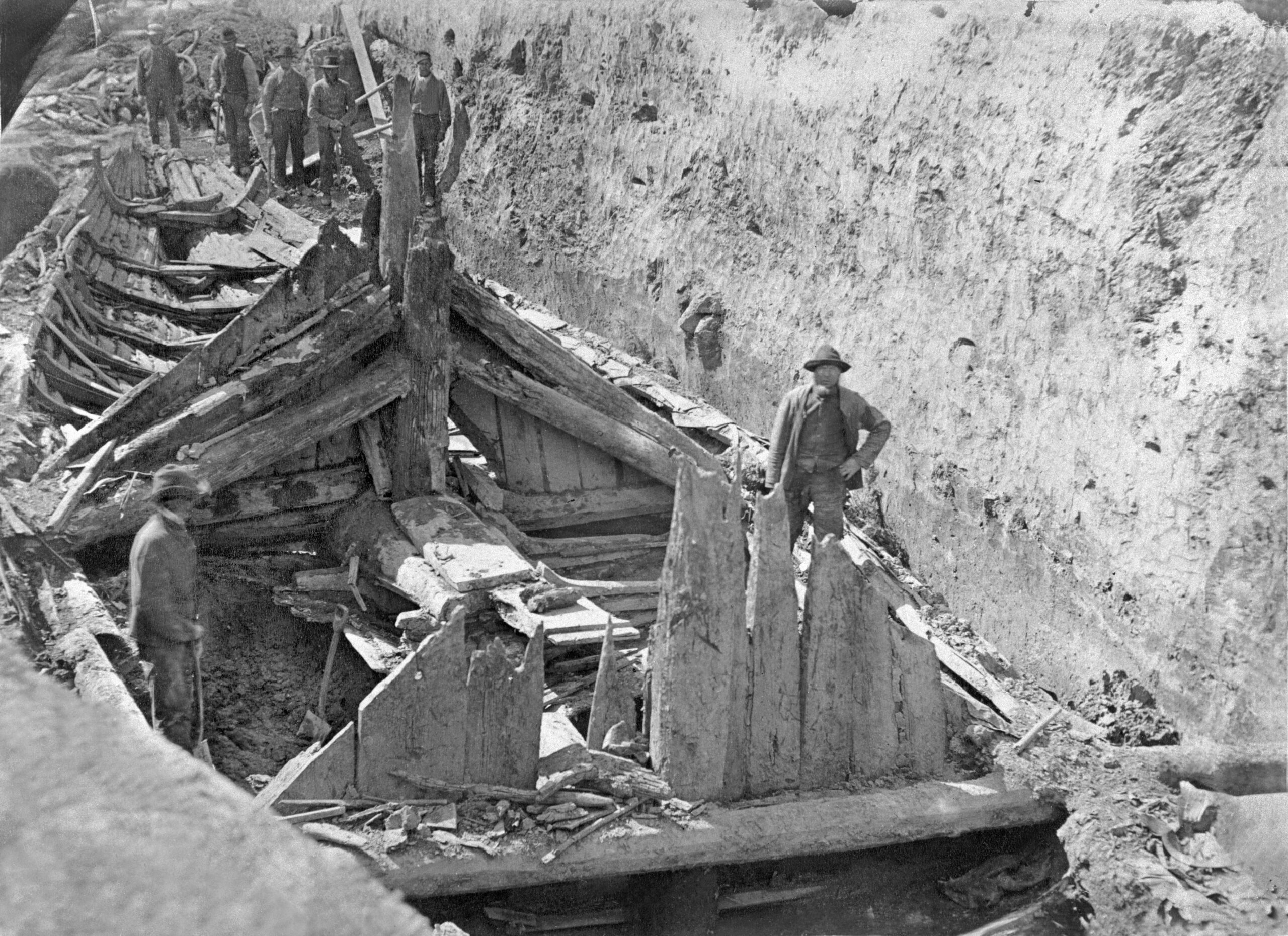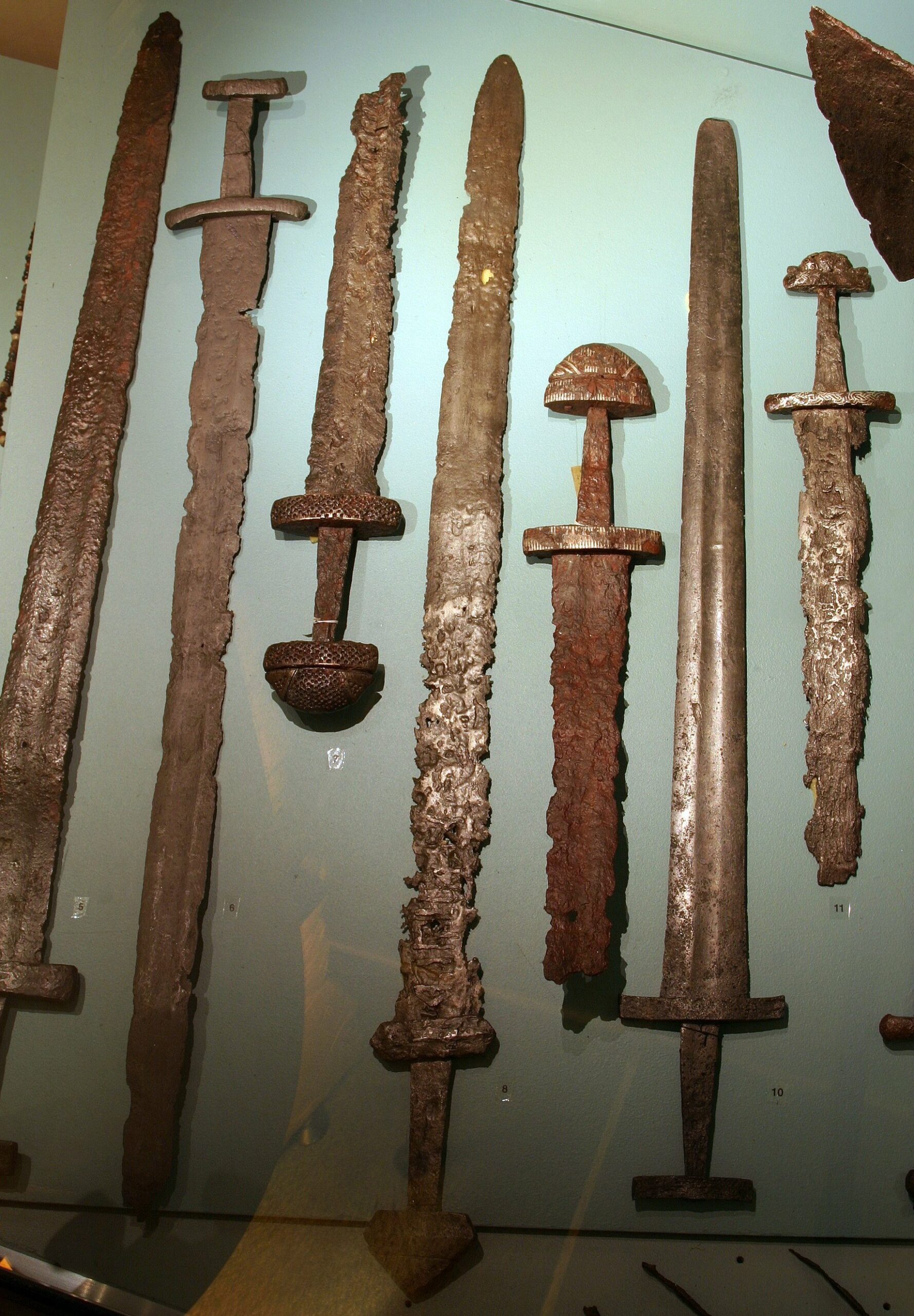Swedish Pagans
“It gladdens me to know that Odin makes ready the benches for a banquet. Soon we shall be drinking ale from the curved horns. The champion who comes into Valhalla does not lament his death. I shall not enter his hall with words of fear upon my lips. The gods will welcome me. Death comes without lamenting. Eager am I to depart. The Valkyries summon me home, those whom Odin sends for me from the halls of the Lord of Hosts. Gladly shall I drink ale in the high seat with the gods. The days of my life are ended. I laugh as I die.” – The Saga of Ragnar Lothbrok
For a long time, the early history of northern Europe was shrouded by a fog of mystery. There was a marked gap in knowledge of Europe in the years between the fall of the Roman Empire and the full spread of Christianity, and this era was simply accepted as the Dark Ages – an era before general literacy, when northern Europe was ruled by savage and fearsome heathens. Those heathens, however, did leave behind their sagas and their tales of great adventures and battles. Scandinavian archaeologists of the 19th century were confronted with a confusing jigsaw puzzle of burial mounds, cryptic rune stones and medieval scriptures.

But then, in 1880, there was a breakthrough with the discovery of the Gokstad mound in Norway. In a ship buried 1,000 years earlier, next to a large pile of shields, swords and jewellery, lay a man that reignited the interest in a long-forgotten age. He was huge for his time, over 1.80m tall. A chieftain who had most likely met a violent death in battle. The embodiment of a Viking.
Warriors from the sea
For a long time, Scandinavian scholars had seen the Viking Age as the end phase of the Germanic Iron Age. Too little was known to be precise and even the word “Viking” was of questionable origin. Most historians refer to the old English word “Wicinga”, which was repeatedly used to reference “warriors coming from the sea” in Anglo-Saxon chronicles. It was also the British who gave their history a distinct, local Viking Age. From the first violent raids on their shores in 793, to the Battle of Hastings in 1066.
If you’d have asked a Swedish Pagan in those times where his origins lay, you might have received an answer similar to those you’d get from the Icelandic Edda, a compendium of Norse folk tales. That once there was a time where worlds were not only divided by light and darkness, but by deep chasms from which the giants ruled. Until Odin, the father of the gods, slew the giant Ymir, whose flesh gave birth to the land and whose blood turned into the sea.
On their journeys and in war, the pagans looked to Odin for guidance and blessings. He was the god of war, who sends his favour to the bravest of them. But like the Vikings themselves, Odin was not single minded. He was also the god of poetry and of wisdom. Once he sacrificed his own eye to bring the pagans the language of the runes. Such rune stones can still be found all over Scandinavia, and although the pagans were otherwise illiterate, they give us a little insight into important people or local customs. Outside of battle, the pagans honoured Thor, the god of thunder. As the patron of the farmers, he rode the sky in his chariot, bringing thunder and lightning down as a sign of power.
Scandinavian metalworkers crafted jewellery and amulets in the form of Thor’s mighty hammer, to attract his protective powers. It was the belief of the pagans that the worlds of gods and men were connected, and although the fate of each man had been decided at his birth, the Gods could still intervene and change fates along the way. The northern gods were no super ethical or morally upright beings. They were flawed, and at times even treacherous and ruthless in the pursuit of their goals. They watched and cheered as men toiled and struggled, and it became the pagan way to live with this feeling of cosmic order and worldly chaos. Of predestined fate and yet personal responsibility.
Norse culture
Showing courage, taking risks and having the will to sacrifice were all essential parts of Norse culture. There was no place for weakness or cowardice because everyday life in Scandinavia was harsh. Far away from the civilisations that had been touched by the Roman Empire, it was hardly the place to sustain a laid-back lifestyle. People stayed loyal to their communities through personal oaths, and laws manifested themselves through societal pressure. Deals, threats and promises had to be made in public, so that no party could back out without bringing shame on their name and family.
In the dark winter months of Scandinavia, each man was obliged to show hospitality to his fellows, which resulted in feasts that lasted days. There, poets and musicians recited and sang tall tales of their revered ancestors, of the gods and their heroes. It inspired men to make a name for themselves, so that the skalds (a composer and reciter of poems honouring heroes) would one day sing of their deeds as well. The bravest of them might even find a way to ascend into the halls of the gods themselves.
Life on Scandinavia’s coast made the Norsemen top notch seafarers. They invented the keel, which was quite the nautical breakthrough, as it allowed ships to cross oceans. Their famous longships were sleek but sturdy, perfect for travelling large rivers. With such ships, the men ventured out. Some wanted to trade, others sought a new place to live. A few were exiled or on the run. But the bravest and hungriest of them all went “Viking”. The world was laid out in front of them and it was theirs for the taking.
With fire and sword

The Danes and Norwegians ventured south and west. With fire and sword they raided across the Frankish coast, and then deep into Charlemagne’s realm. Here, they became the ferocious “Northmen”, and their impact on Frankish society was immense. Tall and broad pagan warriors fought and slaughtered their way through northern France. The Christians viewed them as God’s punishments, as harbingers of the apocalypse. Each successful raid attracted more pagans to the Viking lifestyle though, and especially imposing chieftains became “sea kings” – lords without a country, but with enough money and power to lead expeditions in pursuit of plunder.
Their seemingly endless ambitions took them up the river Seine, to lay siege to Paris itself. Other Sea kings went further west, towards Britannia and Ireland. From the first raids on Anglo-Saxon monasteries to the full-scale invasion, a Great Heathen Army landed in 865. It plundered and raided its way from Northumbria to Wessex and threatened to overtake all of England and turn it into Daneland. Heroes, larger than life had appeared; legends like Ragnar Lothbrok, Thorgils the Devil or Ivar the Boneless. Skalds sang of unshakable shield maidens or the secret warrior brotherhoods such as the Jomsvikings in the Baltic Sea. And another popular tale was that of Rurik and the Rus.
While the Vikings from the shores of Denmark and Norway usually travelled westwards, the Swedish pagans went south and east, across the Baltic Sea. Archaeological evidence shows that the Swedes had formed colonies in Courland and on the Baltic coast as early as 750. Swedish Vikings soon took over a major fort at Lake Ladoga, which opened the way to the vast river network of western Russia. But unlike the British or Frankish shores, there were few riches to be found. No monasteries or wealthy towns to be plundered. So, they travelled southwards in their sleek longships, sliding down the Volga and Dnieper towards the realms even beyond the Black Sea. Laden with goods like amber, swords, honey, tusks, furs or wax, they sought to exchange them for silver and silks. Most profitable, however, was the slave trade. Captured Slavic girls were sold for high prices in the slave markets of the Byzantine Empire in exchange for Greek or Arabic coins.
The way of the Viking
Navigation down the major rivers was hazardous and the surrounding country was treacherous. Semi-nomadic tribes like the Khazars watched the northmen with suspicion. Many other tribes saw the Vikings as intruders, and there was never a guarantee that even those who had shown them hospitality on the way south might not lay in ambush on their way back. But this was the Viking way. Scandinavian merchants travelled with their bodyguards, a sworn group of men, armed to the teeth and united in their belief that they could only trust each other. The journey was long, and many did not return. But those who did did so as rich men. The writings of Islamic and Byzantine scholars tell us of those men, who called themselves the Rus or Varangians.
“I have seen the Rus as they came on their merchant journeys and encamped by the Volga. I have never seen more perfect physical specimens, tall as date palms, blonde and ruddy; they wear neither tunics nor caftans, but the men wear a garment which covers one side of the body and leaves a hand free. Each man has an axe, a sword, and a knife and keeps each by him at all times. The swords are broad and grooved, of Frankish sort. Every man is tattooed from fingernails to neck with dark green or blue-black trees, figures, etc. (…) It is the custom of the king of the Rus to have with him in his palace four hundred men, the bravest of his companions and those on whom he can rely. These are the men who die with him and let themselves be killed for him.” – Ibn Fadlan, 921 C.E.
The name “Rus” probably stemmed from the term “Ruotsi”, a name the Finns gave the Swedes. It simply translates to “men who row”, which is pretty accurate. The Rus travelled from the far north down to Constantinople, which they called “Miklagard”, the “great city”. A group of Varangians even served the Byzantine emperor as warriors for hire. Others travelled even further, down the Caspian Sea towards Baku, the “city of fire”. That trading route, although very dangerous, was also extremely profitable. Back in Scandinavia, archaeologists have found many foreign gold coins and even rings made of ivory.
Over time, the Swedish Vikings of the Rus and Varangians built outposts and colonies along the way. They joined forces with the local clans and made alliances against common enemies. Over the decades, the Rus mixed with the locals, adapted local customs, wore their colourful caftans, and their chieftains called themselves Khans. They often converted to Judaism or Christianity, and it was they who eventually laid the foundation for the Kievan Rus, the realm that Russia, Ukraine and Belarus all claim as their forefathers – their cultural ancestors.
The fascinating Viking Age inspired our song ‘Swedish Pagans‘, which is featured on our album, The Art of War. Take a look at the lyrics we wrote here.
If you’re interested in a more visual interpretation of the above story, watch our Sabaton History episode, Swedish Pagans – Vikings & The Russ:





















